Specialists - Year 5 & 6 Week 5
Week beginning - 11 May 2020
Click here to see last week's Specialist page again.
P.E.
30-45 minutes per day
*Download the 60 Second Challenge Activity Tracking Sheet to track your progress! Click here
Monday
Warm-up
60 Second Challenge: Click here
Not in my backyard
Steps: Place a skipping rope, towel or string on the floor.
Spread soft toys or bundled socks all over the playing space (on one side of the rope) as the ‘rubbish’.
On the signal “READY, SET, GO!” throw each piece of ‘rubbish’ across to the other side of the rope ('out of your yard').
Use a stopwatch to time how long it takes to get all items across the line.
If there is a second person you can play with (sibling or parent), then they will be on the other side of the rope and the game becomes a ‘battle’ to see who can throw the most rubbish into their neighbour’s yard.
If you are able to film your throw, based on the correct overhand and underarm technique, what feedback can you give yourself to improve technique?
Questions: When you were rushing what happened to your technique? Do you think people rush when playing team sports? If so, what makes them rush?

Tuesday
Warm-up
60 Second Challenge: Click here
Throwing Golf
Steps: For this activity you will need an object that can be used as a ball (if indoors use a ball of wool or rolled up socks) and tubs or containers to make the holes (9 holes or up to 18 holes).
Place your tubs in different locations in the playing space you are using – if playing indoors you may use several different rooms. When placing your tubs, decide what order the ‘holes’ (tubs) will be played in.
To make sure the game works you need hole 2 to be visible from hole 1, hole 3 visible from hole 2 etc.
You need to complete all holes in as few throws as possible.
Choose your starting position, count how many throws it takes to get the ball to land in hole 1 – this is your score for the first hole, then stand at hole 1 and try to land the ball in hole 2 – again count your throws.
Modification – if outdoors you might try and play this game with a Frisbee.
Use your non-preferred hand and compare the scores you achieved to your preferred hand.
Questions: What was your score for the whole game of throwing golf?
Did anyone else in the family play?
What did you find challenging in this activity?
How did you adjust your technique based on the feedback you were getting from your actions?
Would you set up our course differently if you played again and why?
Wednesday
Warm-up
60 Second Challenge: Click here
Create Your Own Target Game
Steps: Find some objects to use as obstacles and some objects to throw, and set up in an open space.
You are to create your own target game. Consider rules based upon the following:
The object that you will use to throw (something round/square). Is it heavy or light?
Targets/objects to hit. Big targets or small targets?
The scoring system. Will you get more points for hitting a target further away or a smaller object?
Possible obstacles. Will you need to bounce the ball off something or around something?
Any other rules/challenges for bonus points of your choice.
Play by yourself or with family members if you can.
Share your game with family members, or with your class (if you get a chance in your online class) and try to play someone else’s game.
Questions: Was your game easy or difficult?
What would you change to your game to make it more enjoyable/harder/easier?
How did you change your throw when you found you weren’t landing it in the target?
Thursday
Warm-up
60 Second Challenge: Click here
Physical Activity Bingo
Can you achieve a gold, silver or bronze in this physical activity bingo game?
Complete as many of the activities as possible and tick off once completed.
Can you complete the activities in the blue squares in less than 60 seconds?
If you are finding some of the activities hard, change them or have a rest and then continue.
When performing the activities make sure that you are honest with yourself and display integrity.
Remember if you are going out for a bike ride or scooter to ask your parents first and always wear your helmet!
Click here to download the physical activity bingo sheet!
Friday
Warm-up
60 Second Challenge: Click here
Target 21
Steps: Use chalk/hoop/paper to create as a target as per the image image.
Place 3 objects or cones 2m apart.
You will earn points depending on where your object lands and which cone you throw from.
If you land your object inside the large circle you earn 1 point and if you land it on the ‘bullseye’ inside the circle you can earn 2 points.
If you are throwing from the cone closest to the target and land the object on the target you earn 1 point, from the second cone is 2 points and the third cone is 3 points. For example, if you stand on cone two and land your object inside the large circle you will earn 3 points (1 point for the landing and 2 points because you threw from cone 2).
See if you can reach exactly 21 points. If you go over, you drop to 12 points.
If you have someone to play against, see who can get to 21 the fastest, or change the target score to 50.
Questions: Modify the object you use to throw in future turns to see if it is easier/harder.
What was your strategy to get to exactly 21 points?
How did you change your throw when you found you weren’t landing in the target?
At what speed does the ball/object move when you are trying to aim for a small target? Why?
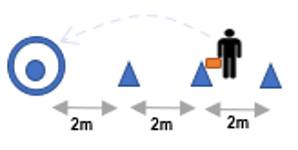
Spanish
30 minutes per week
My Daily Routine (Mi Rutina Diaria)
How do you get ready in the morning?
Here are the first five things that I do in my daily routine:
Me despierto (I wake up), me lavo (I wash), me visto (I get dressed), me ejercito (I exercise) and me como el desayuno (I eat breakfast).
These verbs (such as despertarse, lavarse, ejercitarse) are called reflexive verbs- they are actions that I perform on MYSELF.
This is why the word ‘me’ is in front of the verb (or action).
The ‘se’ at the end of the verb is the clue that tells you that it’s a reflexive verb.
They also have been conjugated (meaning that the endings of the verbs have been changed) to have an -O at the end because I am doing the action, not you.
If I was making an observation that YOU are waking up, I would say “Te despiertas” but you would still say “Me despierto”.
Writing Activity: List the first five things that you do each morning using any of the reflexive verbs below.
Is there something else you do that is not on the list?
Can you find the answer after you watch the video?
Me despierto (I get up. Literal meaning: I wake myself up.)
Me cepillo los dientes (I brush my teeth)
Me cepillo mi cabello (I brush my hair)
Me visto (I get dressed. Literal meaning: I dress myself)
Me ejercito (I exercise. Literal: I exercise myself)
Me como el desayuno (I eat my breakfast)
Me lavo (I have a bath/shower. Literal meaning: I wash myself)
Me siento para hacer mi tarea ( I sit down to do my homework)
Me veo la televisión ( I watch television)
Reading activity: Garfield-Niego Todo (I deny everything). Click here
Look at the pictures in this cartoon and think about what the story might be about.
You DO NOT need to know all the words, or translate all of them- simply use the pictures to give you clues about what is happening in the text.
There might also be a few words in the text that you already know!
Write these words in a list in your Spanish books: Click here
Music
60 minutes per week
Relaxation music playlist
We all have music that we listen to when we are feeling a certain way.
Music for when we feel like celebrating, music for the times when we're feeling angry, music to help us get through the chores we have to do.
Think about the sounds or music you listen to when you need to relax.
Put together a list of songs that would be in your relaxation playlist.
If you have access to a device that allows you to make a playlist (iTunes, Spotify) make a playlist on there.
If you like instrumental piano, have a listen to George Winston as I find his music very relaxing and use it for Mindfulness.
Listen again to the piece 'Hoe-Down' by Copland. Click here
Play along with the A section rhythm, and if you’ve written words, see if you can say them in time with the music:
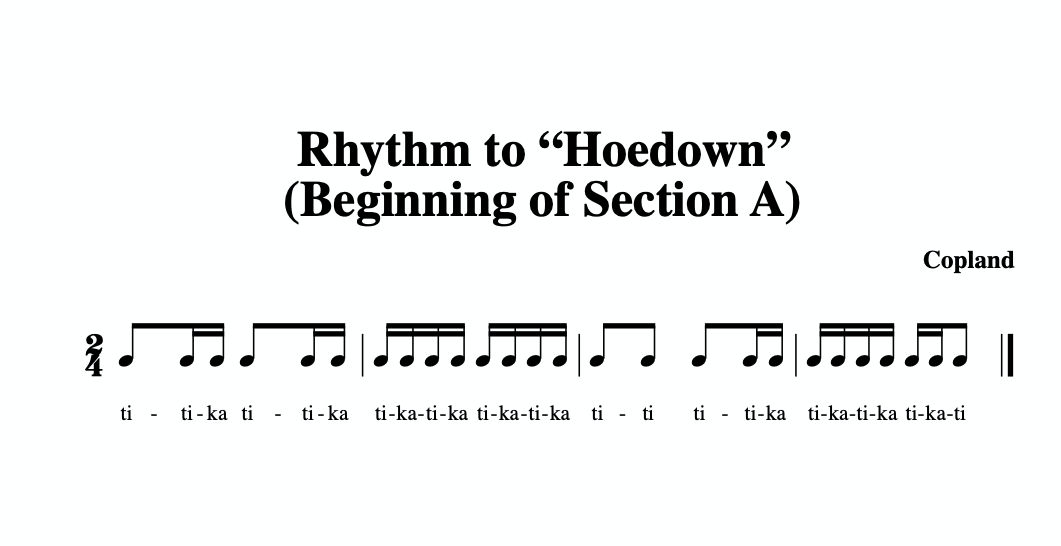
Work out some of the other repeated rhythms in the song and write them down.
The rhythm after the one above (played by the strings at 0:44) can be your next rhythm to write down. Hint - you know all the rhythms in this section and there are only 2 different ones!
You have already analysed the form of the music.
Using the following headings, explain the different musical elements in this song and note changes to these elements:
Year 5: tempo, dynamics, mood, instrumentation, texture
Year 6: tempo, dynamics, mood, instrumentation, texture, timbre
Be specific with your descriptions as they do change throughout the song, particularly with tempo, dynamics and mood.
Note the times there are changes (e.g. at 2:14 there is a change in tempo).
If you play an instrument, remember to keep practising the music for Hoe-Down.
See if you can play sections of it with the orchestra!
If you need the sheet music again: Click here
Art
60 minutes per week
Year 5
Junkbot Construction (continued from last week)
Draw a detailed picture of the robot you would like to create.
Use a full A3 page (in your book if possible) so you can clearly detail the parts of your machine.
How is your robot useful?
What skills does it have?
Will it have a moveable mechanism?
What will it need to perform specific functions?
What kind of character does it have?
Perhaps consider how having a robot might be useful in a lockdown situation.
Let your imagination run free and consider how you will create the features of your robot later, when collecting pieces for construction.
Please remember our school rule of no weapons when designing your artworks.
Consider what you have collected and what might be available in your house at the moment.
Gather what you think you will need, make sure things are clean and check with parents if it’s ok to use them.
You will also need masking tape or electrical tape, glue, a stapler, scissors and scrap paper or card.
Start building after you have completed your drawing and collected your materials.
The constraints of this design are that it must be about the size of an average electric kettle and must stand up on its own. Some elements may exceed the size limitation, such as antenna and moveable extensions.
Possible materials
Bottle tops, lids, atomisers, pumps, plastic bottles, containers and lids. Packaging: moulded cardboard, bubble wrap, clear plastic sheeting, small boxes, bread ties, wire, disposable cutlery, egg cartons, biscuit trays, disposable cups and lids, broken toys, clean tins, old buttons, broken clothes pegs, broken machinery, tapes and CDs.
Tips
Hide your tape and staples if possible.
Joins MUST have two flat surfaces to glue together.
You usually only need a little glue.
Turn boxes inside out for a clean surface.
First aim to get your robot standing. Heavy legs or feet help.
As you work, keep checking that your robot can stand and hasn’t become unbalanced.
See paper sculpting techniques in the images below Year 6 lesson.
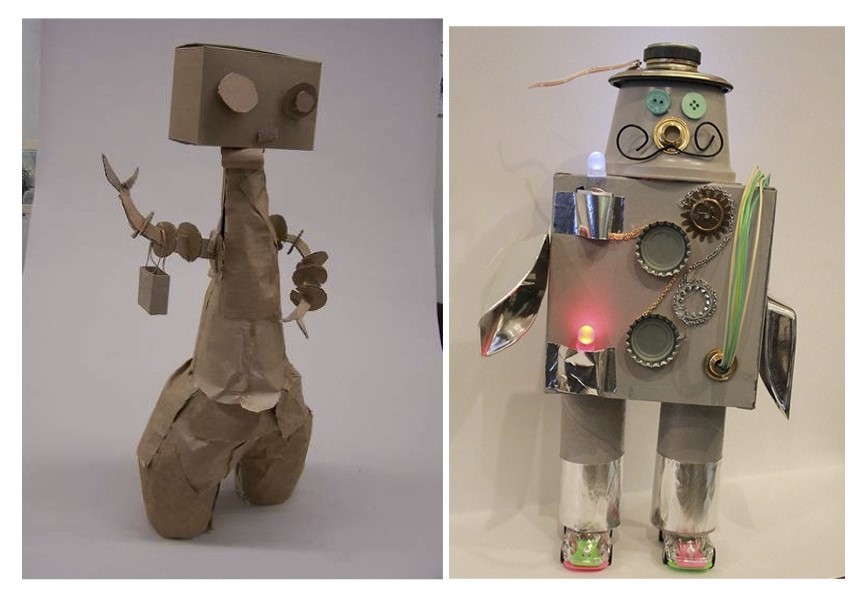
Below is a link to an Art Prize for Learning from Home.
You can be part of a community of students for creating, contributing and connecting from home.
Year 6
Bird Mask (Continued from last week)
Consider the features of a bird.
Research images of different types of birds.
What shapes, textures and colours make up the head, beak, brow and eyes?
Draw a detailed picture of a bird mask you would like to create from cardboard and recycled materials.
Use a full A3 page (in your book if possible) so you can clearly detail the parts of your bird head.
Perhaps you will make up an imaginary bird.
Be as creative with your ideas as you can for your drawing and consider how you will create the features of your bird later, when collecting pieces for construction.
Consider what you have collected so far and what might be available in the house.
Gather what you think you will need, make sure things are clean and check with parents if it’s ok to use them.
You will also need masking tape, glue, a stapler, scissors and plenty of scrap paper or card.
Start building after you have completed your drawing and collected your materials.
The constraints of this design are that it must fit on your face or head and you must be able to see out of it when it is worn.
Possible collected materials
Packaging: moulded cardboard, small boxes, egg cartons, disposable cups and lids, sticks and leaves from outside, feathers, old magazines for cutting out patterns and images.
Tips
Hide your tape and staples if possible.
Joins MUST have two flat surfaces to glue together. You usually only need a little glue.
Turn boxes inside out for a clean surface.
A mask can be worn like a hat, tied on with string or elastic around the head, or held up to the face with a handle or stick to keep your hand away from your face.
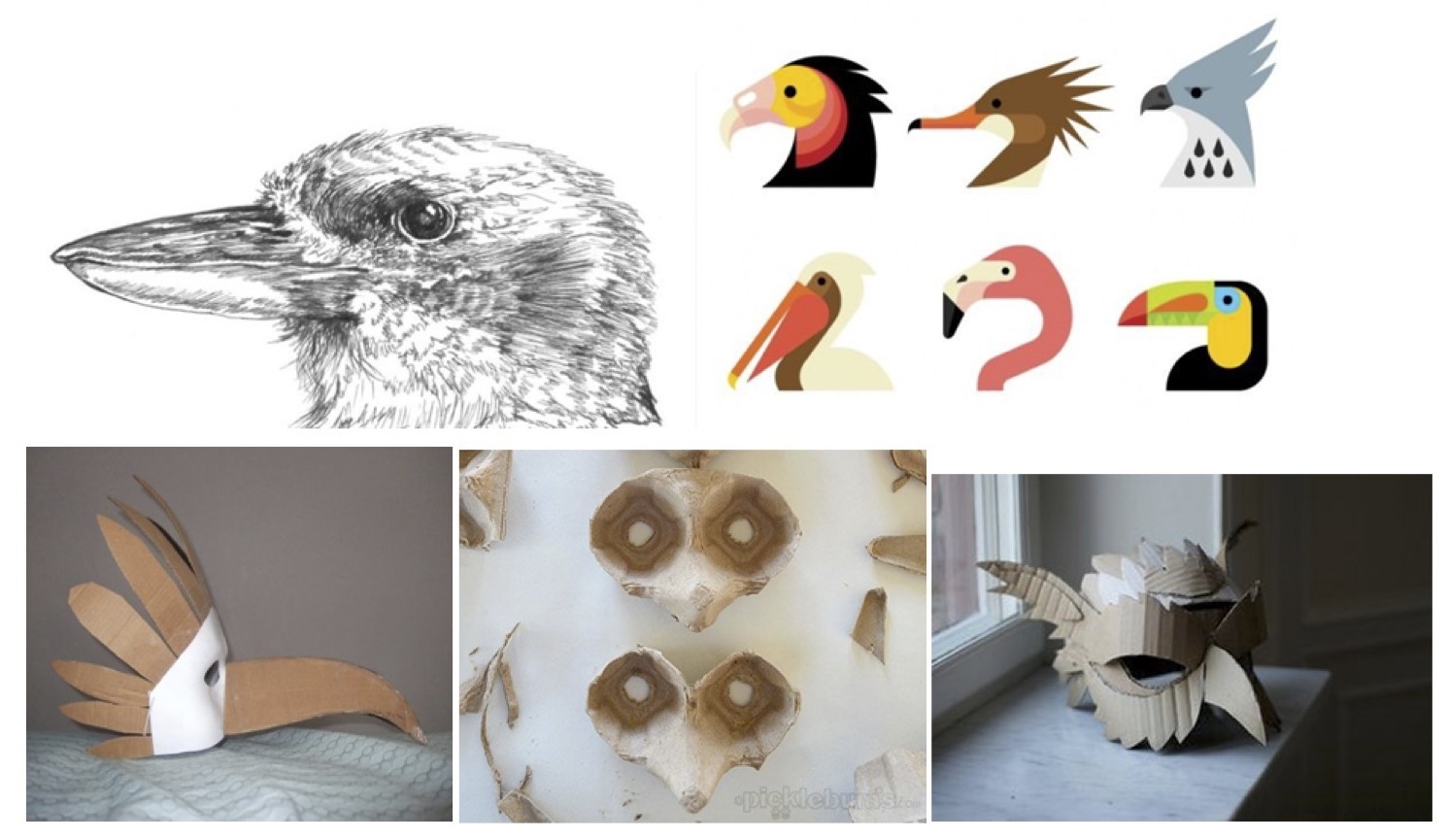
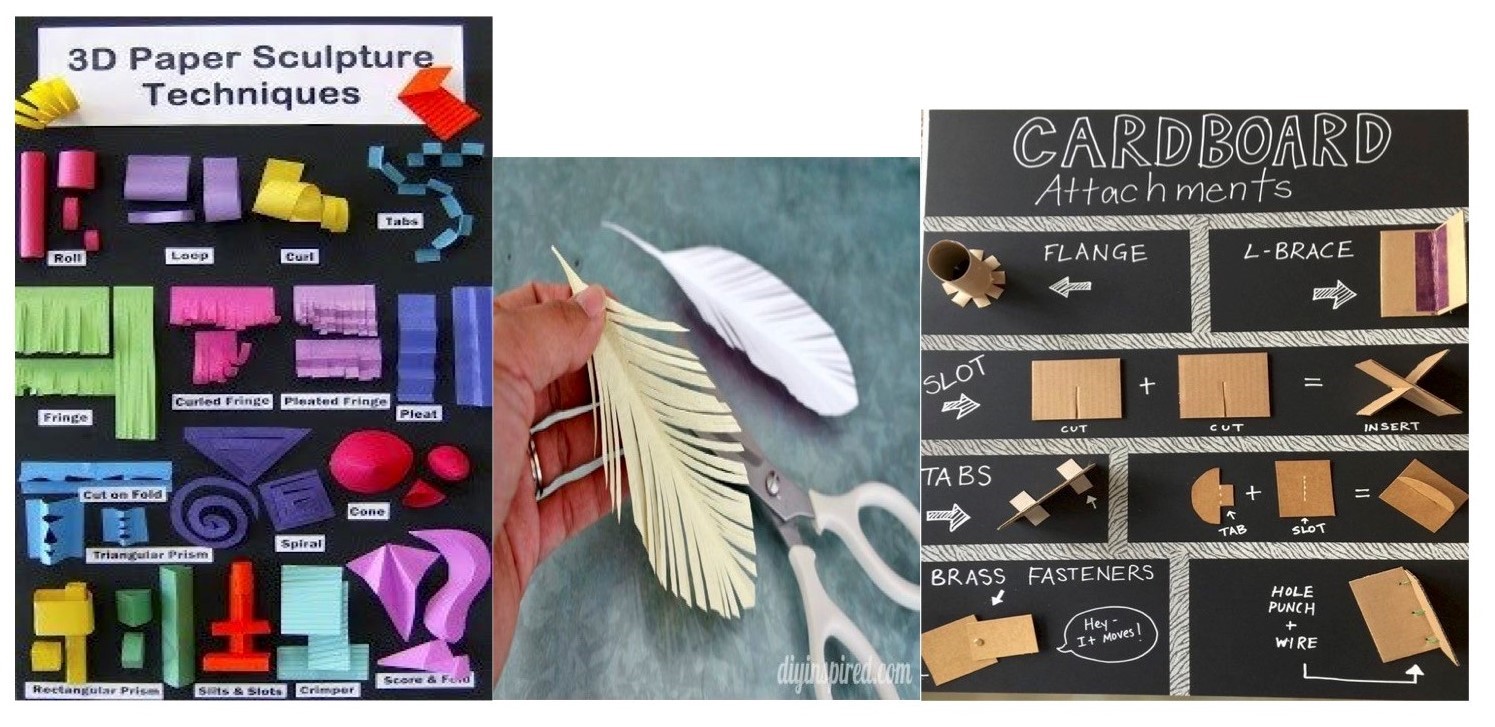
Below is a link to an Art Prize for Learning from Home.
You can be part of a community of students for creating, contributing and connecting from home.
Library
30 minutes per week
Read a nonfiction book or magazine about the earth or click here and read a few different pages of the book you read last week ‘National Geographic Kids:Everything Weather’ from EPIC library.
Carefully read the poem you wrote last week about one of the four elements (earth, wind, fire, water).
Is there additional detail you can add to your poem to capture the reader’s interest?
Create another poem using the same element but a different focus e.g. if your poem was a positive poem about the element earth, create a poem that is about an earthquake (see example below).
Alternatively, you can create another poem focusing on a different element.
Use the table below as a guide.
Next week we will concentrate on illustrating our poetry.
|
ELEMENT |
POSITIVE |
NEGATIVE |
|
Earth |
life, nature, new growth |
drought, earthquake |
|
Wind |
spreads seeds to propagate, flies kites, dries washing |
cyclone, tornado |
|
Fire |
used for heating, cooking |
bushfire |
|
Water |
life giving source, used in recreation |
flood, tsunami |
Example of an acrostic positive and negative poem around the element of earth.
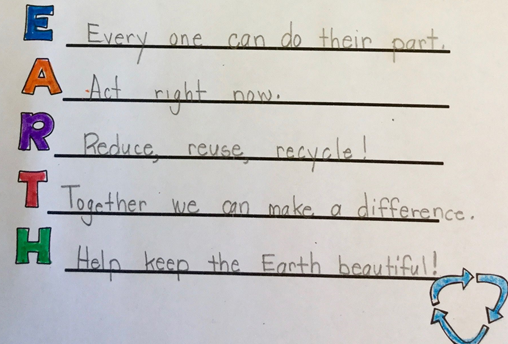
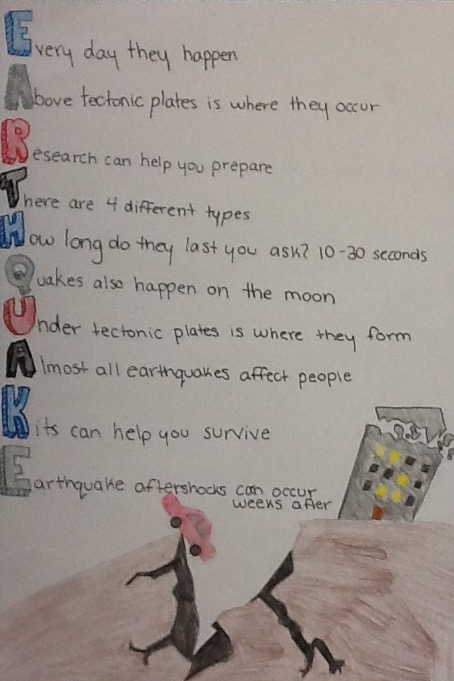
© Copyright Laburnum Primary School
